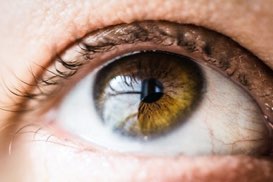Definition: Computer Vision Syndrome (CVS) is a group of visual, or ocular, symptoms caused and/or exacerbated by the use of a computer.
Working on computers is visually demanding. It is therefore likely that individuals with minor vision related problems, which don't produce symptoms under normal conditions, may find themselves symptomatic in this high demand situation.
Common CVS Symptoms:
- Eyestrain
- Eye fatigue
- Dry or irritated eyes
- Blurry vision
- Light sensitivity
- Headaches
- Contact lens problems
- Red eyes
Causes of CVS:
Ergonomic factors
- Overhead lighting (i.e. discomfort glare)
- Orientation of computer screen with respect to user
- Image quality of computer display (pixels/inch of your computer screen as compared with that of a printed page)
Physiological factors
- Decreased blink rate
- Increased tear evaporation
Modifications Which Can Help To Alleviate Symptoms
The key environmental components of visual ergonomics are lighting, orientation of the computer screen, image quality of the computer display and length of time spent at the computer. A problem with one or more of these elements can lead to the classic CVS symptoms of eye strain, eye fatigue, blurred/fluctuating vision, dry eye and headaches.
Computer Placement
Orientation of the computer display with respect to the user is one factor that frequently contributes to CVS. Ideally, the screen should be directly in front of the user at a viewing distance of 20-28 inches. The eyes should be in a downward gaze of about 15 degrees when viewing the screen. As a result, the top of the screen should be below the horizontal eye level of the operator and tilted back slightly (10-20 degrees). This allows for optimized eye performance as well as proper head and neck posture.
Computer Related Dry Eye
A decreased blink rate and increased tear evaporation (frequently compounded by the poor air quality of many work environments) can cause/exacerbate dry eye in computer users. Studies have shown up to a two-thirds decline in a person's blink rate during computer use. In one study, while sitting and conversing (and not reading) the normal blink rate averaged 15-20 times per minute as compared with 6-7 times per minute while reading a computer screen. Reduced blink rate isn't just a phenomenon of computer use. The blink rate slows any time an individual fixates, or stares, for prolonged periods such as while watching television, reading a book or driving a car. While reading a book, the eyes are looking downward and only half open, limiting tear evaporation. By contrast, computer users gaze straight ahead with their eyes fully open exposing twice as much of their ocular surface thus allowing for greater evaporation of their tear film. Treatment for computer related dry eye follows the same course one would pursue for other forms of dry eye (i.e. preservative free artificial tears, punctal plugs, a desk top humidifier, topical medication, etc.).
Additionally…
Using a matte screen filter to reduce glare and/or enhancing the contrast on your computer can help to alleviate eye strain.








